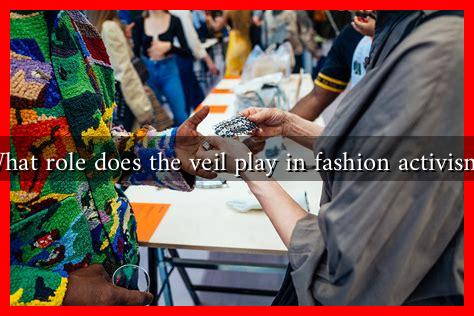-
Table of Contents
What Role Does the Veil Play in Fashion Activism?
The veil, often associated with cultural and religious identity, has emerged as a powerful symbol in the realm of fashion activism. As societies grapple with issues of representation, gender equality, and cultural appropriation, the veil serves as a multifaceted tool for expression and resistance. This article explores the role of the veil in fashion activism, examining its implications for identity, empowerment, and social change.
The Veil as a Symbol of Identity
For many women, the veil is not merely a piece of clothing but a profound expression of their identity. It can signify religious beliefs, cultural heritage, and personal choice. In the context of fashion activism, the veil challenges stereotypes and promotes a broader understanding of diversity. Here are some key points regarding the veil’s role in identity:
- Religious Significance: For Muslim women, the hijab is often a manifestation of their faith. It serves as a reminder of their spiritual commitments and can foster a sense of community among those who share similar beliefs.
- Cultural Heritage: The veil can also represent cultural pride. For instance, the traditional African gele or the Indian dupatta are not just fashion statements but are deeply rooted in cultural practices and histories.
- Personal Choice: Many women choose to wear the veil as an assertion of autonomy over their bodies and choices, countering narratives that depict them as oppressed.
Empowerment Through Fashion
Fashion activism seeks to empower marginalized voices, and the veil plays a crucial role in this movement. By embracing the veil, designers and activists challenge the mainstream fashion narrative that often excludes or misrepresents women who wear it. Here are some examples of how the veil empowers women:
- Visibility: The inclusion of veiled models in fashion shows and campaigns increases visibility for women who wear the veil, helping to normalize their presence in the fashion industry.
- Redefining Beauty Standards: By showcasing diverse representations of beauty, including those who wear the veil, fashion activism works to dismantle narrow beauty ideals that dominate the industry.
- Creating Dialogue: The veil can spark conversations about cultural appropriation and respect for diverse traditions, encouraging a more inclusive approach to fashion.
Case Studies in Fashion Activism
Several notable case studies illustrate the role of the veil in fashion activism:
- Halima Aden: As the first hijab-wearing model to sign with a major modeling agency, Halima Aden has used her platform to advocate for representation in fashion. Her presence challenges stereotypes and encourages other women to embrace their identities.
- Modest Fashion Movement: The rise of the modest fashion movement has led to the creation of brands that cater specifically to women who prefer to dress modestly, including those who wear the veil. This movement not only empowers women but also generates significant economic opportunities.
- Fashion Weeks and Inclusivity: Events like New York Fashion Week have begun to feature more diverse models, including those who wear the veil, reflecting a shift towards inclusivity in the industry.
Statistics and Trends
The impact of the veil in fashion activism is also evident in various statistics and trends:
- A report by the Muslim Fashion Council indicates that the global modest fashion market is projected to reach $361 billion by 2023, highlighting the demand for inclusive fashion.
- According to a survey by the Pew Research Center, 62% of Muslim women in the U.S. wear the hijab, showcasing a significant demographic that fashion brands can engage with.
Conclusion
The veil plays a pivotal role in fashion activism, serving as a symbol of identity, empowerment, and social change. By challenging stereotypes and promoting inclusivity, the veil not only redefines beauty standards but also fosters a deeper understanding of cultural diversity. As the fashion industry continues to evolve, embracing the veil can lead to a more equitable and representative landscape, where all women feel empowered to express their identities. The journey towards inclusivity in fashion is ongoing, but the veil stands as a testament to the power of fashion activism in shaping societal narratives.
For further reading on the intersection of fashion and activism, you can explore resources from organizations like Fashion for Good and Modest Fashion Week.

